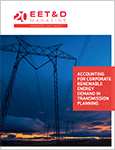More than ever before, utilities are under pressure to tackle the threats that severe and volatile weather pose to their operations and bottom lines. Now seen as the new normal, major outages in the United States have increased six-fold in the past 20 years, according to IDC Energy Insights Business Strategy: Facing Down Extreme Weather.
Heightened customer expectations and growing regulatory scrutiny also drive the need for better storm event preparation. Thus, better visibility on the impact of potential weather threats, to improve power restoration response, is of great value to utilities.
This article will discuss the current challenges utilities face when dealing with volatile weather, and why innovative machine learning approaches can be a great fit for improving storm preparation.
Industry Challenges
Long gone are the days utilities could respond quickly after a storm. To put it simply, preparation is required. It may be as simple and short-term as a holdover decision, or deciding how many crews to have on call the night of a storm. Or, it may be as major as a mutual assistance request three or four days in advance of an impending hurricane. Either way, preparation is critical to avoid being underprepared or over-prepared for a storm, which can be very costly.
Being underprepared can have various negative impacts. Long restoration times, due to inadequate staffing or materials, can be disastrous and instantly become a significant customer satisfaction issue that gains the attention of top management. With social media and increasing media attention, long restorations can result in a public relations crisis that continues long after the storm blows over if customers don’t believe their utility was adequately prepared in the first place.
Regulators in many states are increasing pressure on utilities, insisting restoration planning efforts and systems be improved to avoid long outages. The Public Utility Commissions’ (PUC) expectations and oversight also seem to be increasing across the country as a whole. And increasingly, governors and other political officials are getting involved.
Utilities are constantly scrutinized, needing to justify all of their operational decisions during significant weather events. As public tolerance for major outages decreases substantially, growing regulatory and political scrutiny can lead to denied cost recovery.
Being over-prepared also is costly. Today, many utilities are operating with leaner organizational structures, meaning outside resources are being used more often for significant weather events. Lining up contractors that end up not being used, but still paid, is not something any utility wants to experience.
It’s impossible to always make the perfect preparation decision, but the value in making improvements is enormous – for customer satisfaction, operational costs, avoiding penalties from regulators, and the company’s image. Therefore, utilities need a better understanding of the likely damage and the consequent staffing required when a storm is forecasted. Better methods can only help restoration plans be better received by both utility management and outside parties.
New Methodology: Machine Learning
Current approaches to storm preparation usually involve looking at weather forecasts and calling on experience of how similar storms impacted the utility. Consulting with meteorologists is also widely used, which helps greatly in understanding risk. The weather forecast may even be given a numerical storm categorization – where each storm is given a rating for the level of impact on the utility’s service territory. That’s good, but not enough. An understanding of the damage that will result is needed to gage staffing requirements. Some more advanced utilities have employed statistical techniques – looking at past analog storms and the effects – to try to begin to estimate the potential impact in terms of outages. While better, these simple statistical methods are crude and not very effective. For example, a utility may try to do a regression analysis on wind speed versus outages, which is very over-simplified.
What’s a better way? A promising new approach is machine learning. Whether you call it machine learning, artificial intelligence, or neural network algorithms, this is a far more sophisticated and accurate approach to predicting damage and outages.
Machine learning is being deployed successfully in many business applications today, from web search, to credit risk, to estimating equipment time to failure. It’s a particularly good fit for the utility damage prediction problem. Machine learning uses history to identify patterns that enable future prediction of outages. Every utility is different, with different designs, age, maintenance practices and so on. Two utilities will be impacted differently by the same weather. In fact, different areas of one utility may respond very differently to the same storm. Machine learning can quite literally learn those differences.
Machine learning can transform weather forecasts into much more actionable information, delivering effective results. Quantitative predictions – such as an estimate of the outage incidents on a utility’s service territory – are provided to the operations team well before a storm’s arrival. This, in turn, equals faster restoration times, which translates to increased customer, regulatory and internal management satisfaction.
It’s All About the Data
What’s needed to apply machine learning? A key to machine learning is providing the right, high-quality data to train the machine learning models that do the prediction. Data needed includes:
- Historical outage incident information from the utility that is both time-stamped and geo-located (i.e., latitude and longitude). Typically, three to five years of outage incidents (trouble spots) are required to adequately train the models, but in general, the more data the better.
- Historical weather information corresponding to a utility’s weather-related outages. This also needs to be very high resolution, gridded data.
- Utility’s overhead distribution system data in geospatial form. It’s important for the machine learning to know where poles, lines and isolating (protective) devices are located. A simple example illustrates why this is important: the more lines a utility has in an area, the more likely there will be a problem.
- Tree trimming history to understand where the utility is in its four- to five-year cycle. This is very useful, if available, as it improves the accuracy of predictions. For example, if trees were trimmed a year ago, there will be fewer outages than if trimmed four years ago.
- Factoring in trees to determine where they are in proximity to lines, and when the spring/fall leaf changeover occurs for deciduous trees.
This data is then leveraged to build predictive damage models specific to each type of weather event (i.e., thunderstorms, snow, wind, hurricane, etc.). These models can then be used going forward to predict the impact of future storms based on forecasted weather.
In reality, there will be a number of predictive models used for the type of storm expected. Different machine learning algorithms are then aggregated together to get a range of potential incidents on a utility’s territory.
Machine learning technology can determine where outages will be throughout a utility’s entire network, identifying areas that will be most affected, allowing operations teams to better plan for staging, pre-positioning, or simply alerting local crews. It can also provide useful resiliency insights, highlighting areas of weakness, as illustrated by outage incident history and the damage forecasts themselves.
As exciting as machine learning is, maybe you can start to see that the devil is in the details. It’s not a simple process or something that utilities can do themselves. However, the good news is that vendors have built productized solutions, specifically for the damage prediction problem, that can be applied to a specific utility. Utilities don’t have to be experts in the machine learning, the unique weather requirements, the needed third party data sources or the specialized data processing. It doesn’t have to be a high-risk science project or a long open-ended consulting engagement. The utility simply provides its available data.
Validating Predictions Before a Storm Hits
If utilities are going to begin to use machine learning to make critical staffing decisions, they first really need to understand the reliability of its predictions. One huge benefit of machine learning is its ability to validate the accuracy of a model – for that utility – before putting it into operation. That’s due to cross validation techniques. For example, let’s say that a utility’s wind event model has been built with information from 100 previous storms. In order to cross validate the model, rebuilds of the model include storm and outage information from 99 of the 100 storms, leaving out the 100th storm. The model is then run against that 100th storm. The model has no knowledge of the storm and it is just as though it is generating a prediction for forecasted weather. Then, this process is repeated to create a prediction for a second storm, rebuilding the model with the other 99 storms. This step is repeated for every one of the 100 storms, and accuracy metrics are compiled.
By doing this, a utility is able to reliably understand how accurate the model is, as if it’s had years of experience with it. This cross validation also identifies the strengths and weaknesses of the prediction system. For example, one issue might be that utilities simply don’t have enough data for a particular type of storm, such as a hurricane. As a utility accumulates more data, the model can be retrained with the latest storm data, including rare events like hurricanes. When a utility collects more data, the forecasts become more reliable.
Time to Move On
If the fires, hurricanes and various storms of 2017 are any indication of what the future might hold, utilities need to be better prepared.
Weather forecasts and meteorological consulting, while still very important, are no longer sufficient. Machine learning can provide an effective prediction of a storm’s impact and projected damage. This quantitative predic¬tive information can be a major driver in preparation decisions, and significantly improve a utility’s overall restoration response. A machine learning solution can help a utility hit the right levels of preparation before the storm, reducing the frequency of being underpre¬pared or over-prepared. The time is now for utilities to use these decision-support technologies that can change the way of doing business for the better.
 Don Leick is the senior product manager for DTN’s weather business. He leads the future direction and enhancement of online, mobile and alerting products. He’s been the product manager for the WeatherSentry product for most of his 13 years with the company. Leick has extensive experience working with many of DTN’s customer segments including utilities, wind farms, sports and winter road maintenance.
Don Leick is the senior product manager for DTN’s weather business. He leads the future direction and enhancement of online, mobile and alerting products. He’s been the product manager for the WeatherSentry product for most of his 13 years with the company. Leick has extensive experience working with many of DTN’s customer segments including utilities, wind farms, sports and winter road maintenance.








